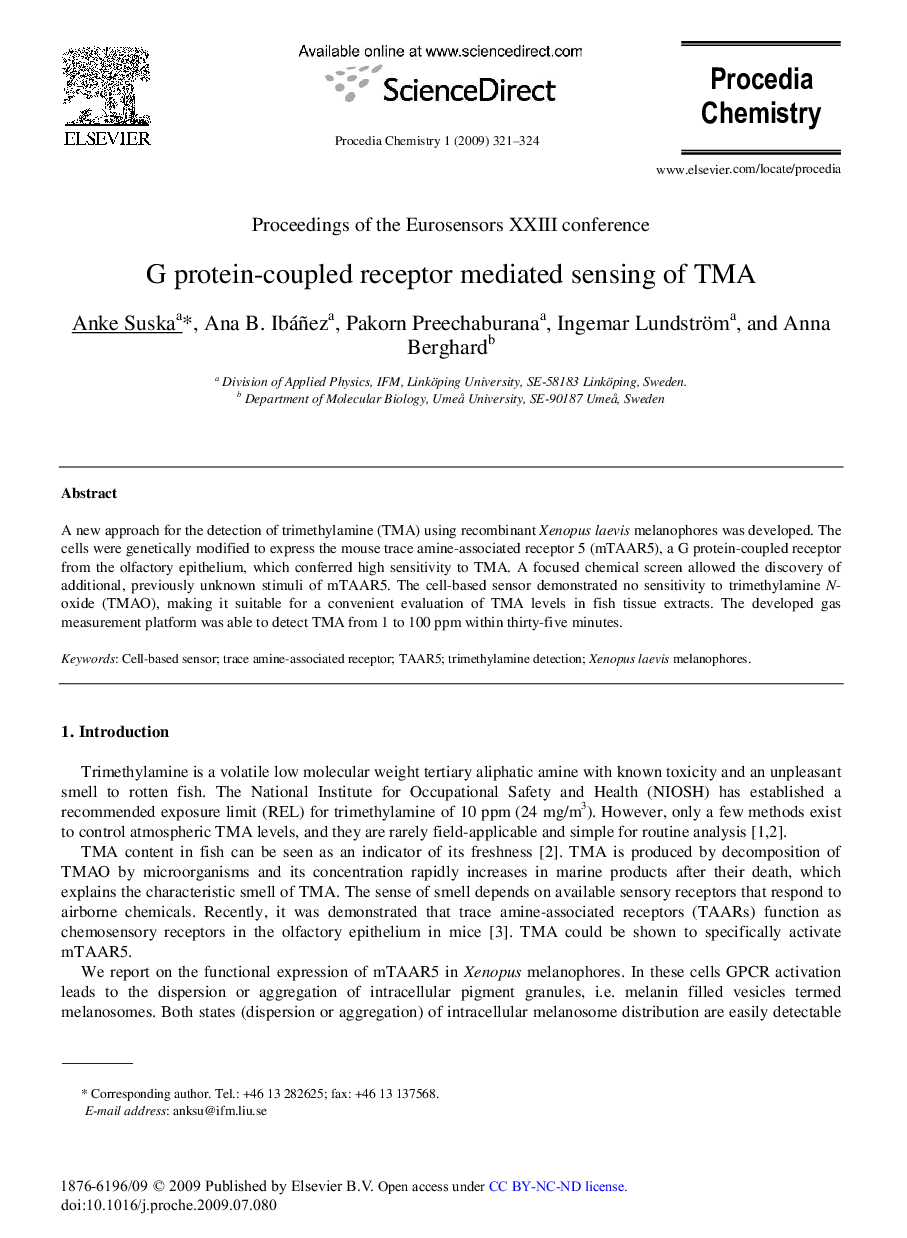| Article ID | Journal | Published Year | Pages | File Type |
|---|---|---|---|---|
| 239722 | Procedia Chemistry | 2009 | 4 Pages |
Abstract
A new approach for the detection of trimethylamine (TMA) using recombinant Xenopus laevis melanophores was developed. The cells were genetically modified to express the mouse trace amine-associated receptor 5 (mTAAR5), a G protein-coupled receptor from the olfactory epithelium, which conferred high sensitivity to TMA. A focused chemical screen allowed the discovery of additional, previously unknown stimuli of mTAAR5. The cell-based sensor demonstrated no sensitivity to trimethylamine N-oxide (TMAO), making it suitable for a convenient evaluation of TMA levels in fish tissue extracts. The developed gas measurement platform was able to detect TMA from 1 to 100 ppm within thirty-five minutes.
Related Topics
Physical Sciences and Engineering
Chemical Engineering
Chemical Engineering (General)
